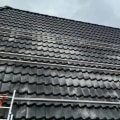Budgeting for a new home involves far more than simply preparing for the purchase price, and buyers who take time to understand the full scope of upfront expenses are better equipped to make confident decisions. The most immediate cost is the down payment, which typically ranges from 3% to 20% depending on loan type and financial strategy. Alongside this comes earnest money, a deposit showing serious intent to buy. Closing costs—often underestimated by first-time buyers—include lender fees, title insurance, appraisals, credit checks, attorney services, and tax-related adjustments. These can collectively add thousands to the total amount due at signing. Buyers are also encouraged to budget for home inspections, which reveal structural issues, electrical problems, or potential hazards that could affect safety and long-term maintenance. Even though these early costs may feel overwhelming, understanding them provides clarity and influences the overall financial plan, making the home-buying process more predictable and empowering.
Post-Purchase Essentials and Hidden Responsibilities
Once the keys are in hand, the financial responsibilities shift toward immediate needs like moving expenses, utility activation, and basic furnishings. Many new homeowners discover that even small tasks—installing blinds, purchasing tools, or replacing outdated fixtures—can add up quickly. Home maintenance becomes a recurring cost that should be built into the annual budget from the start. Routine services such as lawn care, HVAC filter replacements, gutter cleaning, and pest prevention are essential for preserving the property and avoiding expensive repairs down the line. Unexpected issues inevitably arise, and budgeting for them helps prevent stress. For instance, a homeowner might find themselves coordinating something unrelated to the buying process—such as washer repair in Jackson, TN reminding us that appliances and systems can fail at any time. Creating an emergency fund specifically for home-related surprises ensures that buyers are not caught off guard by the realities of ownership.
Long-Term Ownership Costs and Financial Planning
Beyond the immediate expenses, long-term ownership brings continuing financial obligations that must be accounted for early on. Property taxes vary widely depending on location and can increase over time as communities develop or market values rise. Homeowners insurance is another ongoing cost that protects against damage, theft, and liability; depending on the area, additional policies for floods, hurricanes, or earthquakes may also be necessary. Repairs and renovations should be part of long-term financial planning as well. Even well-maintained homes eventually require roof replacements, updated plumbing, or new exterior siding. Energy efficiency upgrades—like improved insulation or modern windows—not only enhance comfort but also reduce utility bills in the long run. When buyers understand these long-term commitments, they can choose homes that better match their ongoing financial capacity and lifestyle needs.
Creating a Sustainable Home-Buying Budget
A strong budgeting strategy ultimately combines careful planning with realistic expectations. Buyers benefit from breaking down costs into categories—upfront, ongoing, and long-term—so they can see the full financial picture clearly. Working with real estate agents, financial advisors, and lenders helps refine this plan and identify areas where savings or assistance programs may apply. With thoughtful preparation and a willingness to look beyond the purchase price, homeowners can approach their new investment with confidence, knowing they have accounted for the true costs of owning a home and set themselves up for long-term financial stability.



